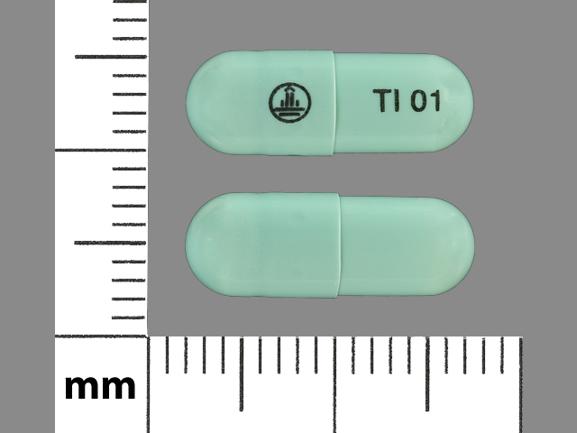Spiriva Disease Interactions
There are 5 disease interactions with Spiriva (tiotropium).
Inhaled anticholinergic agents (applies to Spiriva) angioedema
Moderate Potential Hazard, Moderate plausibility.
Angioedema has been reported during therapy with inhaled anticholinergic agents. Therapy with these agents should be administered cautiously in patients at risk of developing angioedema and if such reaction occurs during treatment, therapy should be stopped at once and alternative treatments should be considered. In addition, therapy with Spiriva HandiHaler should be used with caution in patients with severe hypersensitivity to milk proteins as the product contains the inactive ingredient, lactose monohydrate.
References
- "Product Information. Atrovent (ipratropium)." Boehringer-Ingelheim PROD (2002):
- "Product Information. Spiriva (tiotropium)." Boehringer Ingelheim (2002):
Inhaled anticholinergic agents (applies to Spiriva) anticholinergic effects
Moderate Potential Hazard, Moderate plausibility. Applicable conditions: Urinary Retention, Glaucoma (Narrow Angle)
Aclidinium, ipratropium, umeclidinium, and tiotropium are anticholinergic agents. Although systemic effects are uncommon due to the poor absorption of quaternary ammonium compounds from gastrointestinal and nasal mucosa, worsening of urinary retention or angle-closure glaucoma has been reported. Increased intraocular pressure and precipitation or exacerbation of angle-closure glaucoma may also occur due to inadvertent contact of the eye with aerosolized or nebulized drug. Accordingly, therapy with quaternary ammonium compounds should be administered cautiously in patients with urinary retention/obstruction or angle-closure glaucoma. Measures should be taken whenever possible to minimize ocular exposure to these drugs, such as keeping eyes closed during oral inhalation or use of a mouthpiece rather than face mask during nebulization. Patients should be advised to contact their physician if they experience urinary difficulty (especially in patients with prostatic hyperplasia or bladder neck obstruction); or signs and symptoms of angle-closure glaucoma (e.g., eye pain or discomfort; blurred vision; visual halos; colored images in association with red eyes from conjunctival congestion or corneal edema).
References
- Gross NJ "Ipratropium bromide." N Engl J Med 319 (1988): 486-94
- Milford CA, Mugliston TA, Lund VJ, Mackay IS "Long-term safety and efficacy study of intranasal ipratropium bromide." J Laryngol Otol 104 (1990): 123-5
- Lozewicz S "Bladder outflow obstruction induced by ipratropium bromide." Postgrad Med J 65 (1989): 260-1
- Pras E, Stienlauf S, Pinkhas J, Sidi Y "Urinary retention associated with ipratropium bromide." DICP 25 (1991): 939-40
- Massey KL, Gotz VP "Ipratropium bromide." Drug Intell Clin Pharm 19 (1985): 5-12
- Pakes GE, Brogden RN, Heel RC, Speight TM, Avery GS "Ipratropium bromide: a review of its pharmacological properties and therapeutic efficacy in asthma and chronic bronchitis." Drugs 20 (1980): 237-66
- "Product Information. Atrovent (ipratropium)." Boehringer-Ingelheim PROD (2002):
- "Product Information. Atrovent Nasal (ipratropium nasal)." Boehringer-Ingelheim
- "Product Information. Spiriva (tiotropium)." Boehringer Ingelheim (2002):
- "Product Information. Tudorza Pressair (aclidinium)." Forest Pharmaceuticals (2012):
- "Product Information. Incruse Ellipta (umeclidinium)." GlaxoSmithKline (2014):
Inhaled anticholinergic agents (applies to Spiriva) tachycardia
Moderate Potential Hazard, Moderate plausibility. Applicable conditions: Arrhythmias
Cases of supraventricular tachycardia and atrial fibrillation have been reported with the use of inhaled anticholinergic agents in patients with COPD/Asthma. Care and monitoring of cardiac function is recommended when prescribing these agents to patients at risk.
References
- "Product Information. Atrovent (ipratropium)." Boehringer-Ingelheim PROD (2002):
- "Product Information. Spiriva (tiotropium)." Boehringer Ingelheim (2002):
Tiotropium (applies to Spiriva) liver
Moderate Potential Hazard, Moderate plausibility. Applicable conditions: Liver Disease
The effects of hepatic impairment on the pharmacokinetics of tiotropium have not been studied. Caution is recommended when prescribing this agent to patients with impaired liver function.
References
- "Product Information. Spiriva (tiotropium)." Boehringer Ingelheim (2002):
Tiotropium (applies to Spiriva) renal dysfunction
Moderate Potential Hazard, Low plausibility.
Tiotropium is primarily eliminated unchanged by the kidney. Renal impairment has been associated with increased plasma drug concentrations and reduced drug clearance after both intravenous infusion and dry powder inhalation. Mild renal impairment (CrCl 50 to 80 mL/min), which is often seen in elderly patients, increased tiotropium systemic exposure (AUC) by 39% following intravenous infusion. In COPD patients with moderate to severe renal impairment (CrCl < or equals to 50 mL/min), tiotropium AUC increased 82% following intravenous administration, which was confirmed by plasma concentrations after dry powder inhalation. Although generally well tolerated, therapy with ipratropium should be administered cautiously in patients with moderate to severe renal impairment. Monitoring for renal function is recommended. Patients should be advised of and monitored for potentially increased systemic adverse effects such urinary retention.
References
- "Product Information. Spiriva (tiotropium)." Boehringer Ingelheim (2002):
Spiriva drug interactions
There are 110 drug interactions with Spiriva (tiotropium).
More about Spiriva (tiotropium)
- Spiriva consumer information
- Check interactions
- Compare alternatives
- Pricing & coupons
- Reviews (119)
- Drug images
- Side effects
- Dosage information
- During pregnancy
- Generic availability
- Support group
- FDA approval history
- Drug class: anticholinergic bronchodilators
- Breastfeeding
- En español
Related treatment guides
Drug Interaction Classification
| Highly clinically significant. Avoid combinations; the risk of the interaction outweighs the benefit. | |
| Moderately clinically significant. Usually avoid combinations; use it only under special circumstances. | |
| Minimally clinically significant. Minimize risk; assess risk and consider an alternative drug, take steps to circumvent the interaction risk and/or institute a monitoring plan. | |
| No interaction information available. |
Further information
Always consult your healthcare provider to ensure the information displayed on this page applies to your personal circumstances.


